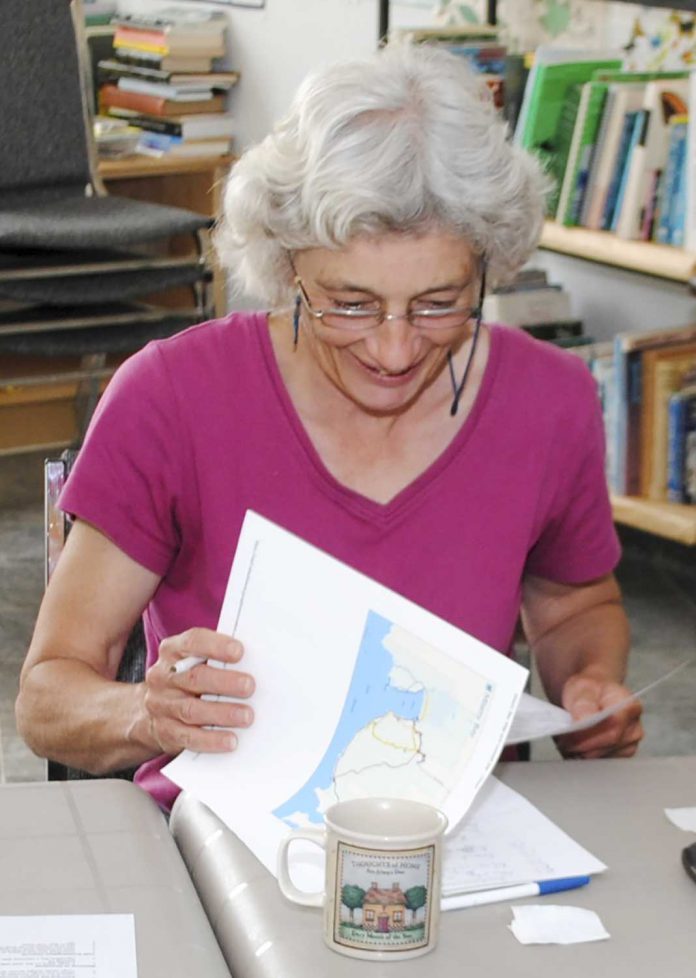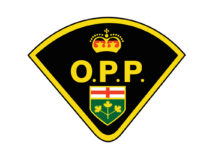EVANSVILLE—Gaynor Orford has always had an affinity for all things green and growing, so when rumblings of the creation of a new park to be situated on the unique alvars of Misery Bay began back in the 80s, her interest was piqued—but it wasn’t until around 1995-96 that she became involved in the Friends of Misery Bay and a 20-year odyssey of volunteerism began.
“Doreen Bailey was a neighbour of mine (Ms. Bailey, widely recognized as one of the driving forces behind the Friends of Misery Bay died two years ago, in April of 2016),” she said. It didn’t take long for her neighbour to recruit Ms. Orford into the ranks and Ms. Orford soon found herself on the Friends of Misery Bay board—where she settled in quite happily over the next two decades—mostly. “I took a bit of a hiatus in 2002,” said the now-retired C.C. McLean Public School teacher. But she still found herself taking school groups up for tours at the park.
“After I retired from teaching, I was asked to rejoin the board, that was in 2011,” she said. “A lot had changed in the time I was away. A lot of progress had taken place, but there were still a lot of things that needed to be done.”
Riding herd on an enthusiastic committee made up of volunteers can sometimes be challenging—although Ms. Orford bristles politely at the suggestion she was “riding herd.” A lot of great ideas come to the fore, she explained, but it’s Ontario Parks that has the final say. “Sometimes they say ‘whoa you can’t do that’,” she laughed. “You can sometimes get too involved and think that everything is a wonderful idea. You can’t please everybody, so you try to please as many as you can.” When a government has the final say, patience is also a virtue.
Ms. Orford said that her involvement with the park has brought her a lot of satisfaction. As a bit of a history buff, she has learned a lot of historical details from the area, and then there is the geology. “I have always been interested in plant science,” she said.
Wandering the park trails, surrounded by nature’s wonders, both flora and fauna, it is easy to be confused about how the bay came to have its name. Seems an early settler was working all day in the hot sun, cutting marsh grasses as forage for his cattle, when a boat with a couple of men in it approached and asked “what place is this?” The tired farmer factiously replied “misery.” The men in the boat were government surveyors and the name was duly recorded and stuck firmly into the amber of officialdom.
When Ms. Orford reconnected with the Friends of Misery Bay, she set about “pulling stuff out of storage” and putting together small displays that help visitors put the things they see into context.
The displays at the Misery Bay interpretive centre serve another useful purpose. “They highlight the need for protection,” noted Ms. Orford, pointing out that the unique environment of the alvars and Misery Bay make the park home to a number of plant species that are not normally to be found in the official Ontario plant guides.
Ms. Orford also found she really enjoyed interacting over the past eight years or so with the summer students who come to work at Misery Bay Park and has truly enjoyed the opportunities for discovery that working in the park have provided—particularly being part of the Laurentian University turtle mortality research project. “We have a great working relationship with Laurentian,” she said.
Building up the park’s store of plant life samples (a process slightly complicated by the edict not to sample any living plants) is one project Ms. Orford really enjoys being part of, the second is taking photographs of blooming plants. “It makes it a lot easier to have photographs on hand where the plants have been verified,” said Ms. Orford. “Trying to do that by description can be very challenging.”
Ms. Orford’s winter volunteer work is focused on the Gore Bay Curling Club, one of her other passions.
As to what drew her to volunteering in the first place, Ms. Orford credits the example of her mother.
“My mother led by example,” she said. “She was always doing something in the community, working with the Girl Guides, assisting with the church ladies. I guess I also wanted to set a good example for my own children.”
As to maintaining volunteer efforts, Ms. Orford advises that “it helps to have things that you are interested in. I have been curling for years, so when I was approached to be part of the curling club I was happy to become involved.”
Volunteerism comes down to the “three Ts,” said Ms. Orford. “Time, talent and treasury. I think it is wonderful that people actually pay, buy memberships in the Friends of Misery Bay, to come out and work to keep the centre open.”




